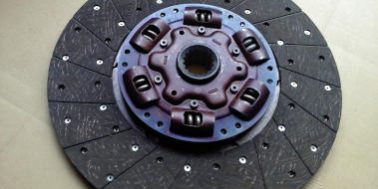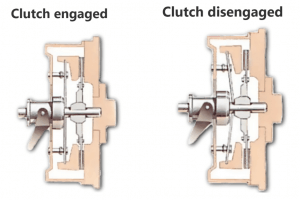Predicting how long a clutch will last can be like predicting the Grand National winner – there are many variables that could affect the outcome. Your driving style will be the main forecaster of clutch life, for example, the Lewis Hamilton’s among us that love to make lots of gear changes at speed, and the city drivers who stop-start their car often to wait in traffic will undoubtedly need a new clutch sooner than a motorway driver that gently cruises along and hardly changes gear.
As a rule of thumb, most clutches will last in the region of 60,000 miles before the need for replacing. However, we have had to replace some at around 30,000 (or less), and we’ve seen some clutches that have continued to keep going past 100,000 miles.
How carefully you use your clutch, the climate and environment you drive in, and your car type will also play a role in predicting the life expectancy of your clutch.
How does a clutch work?
The basic function of a clutch is to separate the engine from the wheels, allowing you to change gear and to completely stop while the engine continues to run. The clutch is made up of three main components:
- A disc or plate called a clutch plate
- The pressure plate
- The flywheel
When the clutch is employed (your foot is off the pedal), the springs in the clutch press the three components together so that the engine and the transmission are connected and turning at the same speed. However, when you disengage your clutch (press your foot down on the pedal – the springs pull the pressure plate away from the clutch plate, so that the flywheel and pressure plate turn at a different rate. This allows for a smooth gear change.
These diagrams from How a Car Works shows a clutch engaging and disengaging:
How do I know when my clutch needs replacing?
Signs that you may need a clutch replacement can be:
- Sticking, vibrating or loose clutch pedal when pressed
- Squeaking noises when the pedal is pressed’
- You can ‘rev’ the engine, but experience poor acceleration
- Shifting gear isn’t a smooth process
- A ‘slipping’ clutch – this is when your clutch is disengaging, and no power is being delivered to the wheels causing a loss of acceleration.
CONTACT DOUBLE DEE AUTOS
How can I prolong the life of my clutch?
In short, the less work you require your clutch to do, the longer it’s likely to survive. Try not to use your clutch when you don’t need to.
- If you are at traffic lights, don’t use the clutch as a way of making the car stand still. Put your car in neutral and apply the handbrake instead. This will give your clutch a well-deserved break instead of keeping constant pressure on it.
- Don’t ‘ride the clutch’. Using the clutch pedal as a way of controlling the speed of your car is a big no go. You have an accelerator and brakes for that. It will shave years off your clutch’s lifetime. In general, the clutch should either be fully depressed or fully released when driving.
- Wait until the clutch is fully released and the gear is engaged before accelerating.
- Regular servicing and maintenance will keep parts working for as long as possible.
If you are experiencing some of the symptoms of a worn out clutch and would like to get your clutch checked or replaced, get in touch with our friendly team for a quote. We provide reliable car servicing in Bromley to keep your vehicle in top condition.


